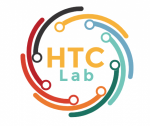Prewriting is the process of discovering and developing ideas before a first draft, which requires divergent thinking and often implies unstructured strategies such as diagramming, outlining, free-writing, etc. Although large language models (LLMs) have been demonstrated to be useful for a variety of tasks including creative writing, little is known about how users would collaborate with LLMs to support prewriting. The preferred collaborative role and initiative of LLMs during such a creativity process is also unclear. To investigate human-LLM collaboration patterns and dynamics during prewriting, we conducted a three-session qualitative study with 15 participants in two creative tasks: story writing and slogan writing. The findings indicated that during collaborative prewriting, there appears to be a three-stage iterative Human-AI Co-creativity process that includes Ideation, Illumination, and Implementation stages. This collaborative process champions the human in a dominant role, in addition to mixed and shifting levels of initiative that exist between humans and LLMs. This research also reports on collaboration breakdowns that occur during this process, user perceptions of using existing LLMs during Human-AI Co-creativity, and discusses design implications to support this co-creativity process.
Latest posts by Ryan Watkins (see all)
- Learning activities in technology-enhanced learning: A systematic review of meta-analyses and second-order meta-analysis in higher education - April 29, 2024
- Legal Aspects for Software Developers Interested in Generative AI Applications - April 28, 2024
- Large Language Models are as persuasive as humans, but how? About the cognitive effort and moral-emotional language of LLM arguments - April 24, 2024
